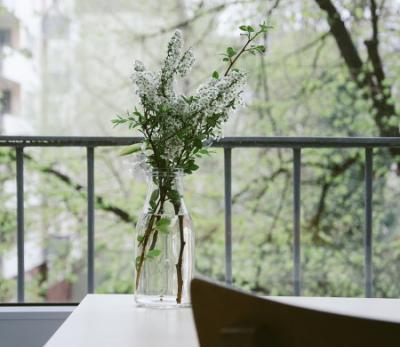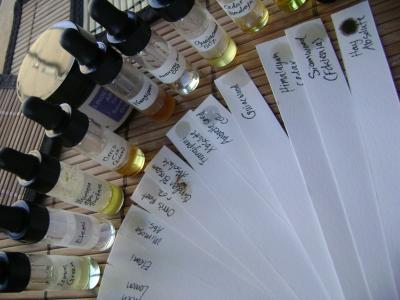The sense of smell is a neglected and undervalued sense in our visually dominated world. Consciously focusing on the scents around us and training our olfactory sense allows us to hone our smelling skills, deepen our life experience and interactions with scent and put mindfulness and reflective awareness into practice.

Olfaction and the benefits of training our sense of smell
The act of smelling connects us to other people and things in the world. It provides instant pleasure or takes us on a trip down memory lane, however, we often fail to recognise its value or give it the attention it deserves.
Training and refining our olfactory sense can advance our insight about its effects on us, our experience of life or the rewards of being in the moment. Frequent and conscious contact with scents increases olfactory sensitivity, keeping our sense of smell in shape. Smell and taste are closely related, so by heightening our ability in perceiving smells means we also can have a richer cooking and gustatory experience.
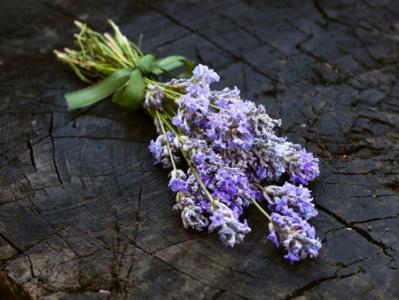
Describing aromas, particularly in the English language, is quite difficult as we lack the specific vocabulary when we try to describe a scent. In order to improve our ability to verbalise olfactory perceptions, it's a case of practice makes perfect.
Regularly engaging with different aromas and learning how to discriminate, analyse and describe their qualities and put that information to better use is part of the process of developing an odour vocabulary. Joining our cognitive skills and sensory processing leads to the formation of an odour memory.

As we age our ability to perceive smell diminishes which can affect our quality of life. Active smelling keeps the brain's neural circuits working, so don't forget to "use it or lose it".
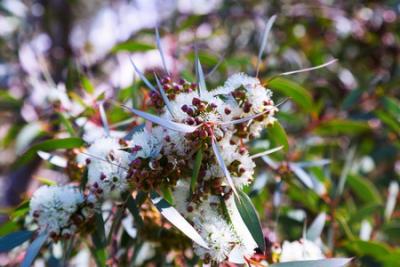
Sensory exercises
The first exercise, a type of meditation on scent, focuses on aromatic materials you can find in your kitchen e.g. herbs, spices, fruit, vegetables, tea, coffee or chocolate or outdoors e.g. flowers, leaves, wood or other types of plant material. You may also choose to conduct this exercise when burning incense or with perfume on a smelling strip.
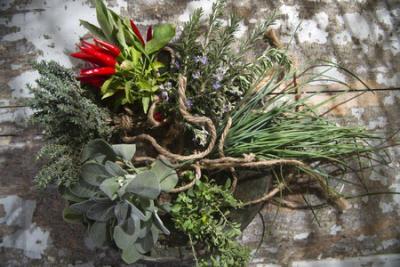
Choose a quiet, peaceful, well ventilated area away from other competing smells.
Gather the items you are using for this exercise in front of you as well as a notebook and pen for note-taking. Methodical journaling of your impressions is vital in developing your olfactory memory and vocabulary.
Close your eyes and place the item under your nose and take short, light sniffs.
With dried herbs and spices, crush lightly and keep in tightly sealed jars. When smelling fresh herbs gently rub the leaves, with citrus fruits you can scratch the peel.
Select no more than three items for each exercise. You can repeat the exercise with the same set of aromatics over a few consecutive days. Take a short break between smelling each individual aromatic.


After smelling, document your impressions, for example:
- any colour, taste, texture, sound or shape associations.
- feelings the scent evokes.
- is the scent cooling/warming, light/heavy, strong/weak.
- type of aroma e.g sweet, spicy, citrus, herbal, floral, woody.
- think of any memories, recollections, associations, objects, season or places the smell brings to mind.

Don't rush the process, allow yourself time to register and process the aroma in your mind. Let the associations you have with the scent come and go without attaching to it - there are no right or wrong answers to your thoughts or perceptions.
We detect scent using our own unique combination of olfactory receptors. We each have around 350 to 400 olfactory receptors but what those receptors can express varies from person to person. The way in which we perceive the quality of an aroma is singular on both a genetic level and the particular meaning that we have assigned to it.
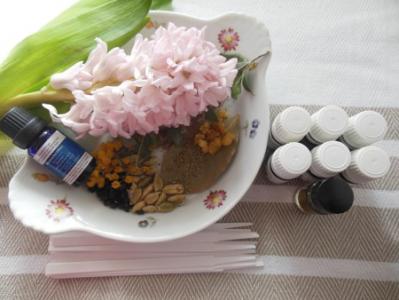
Essential oil exercise
This follows a similar pattern to the previous exercise but instead uses essential oils as the aromatic materials.
Essential oils are complex aromas composed of many aromatic constituents, revealing a transforming odour profile as they evaporate.
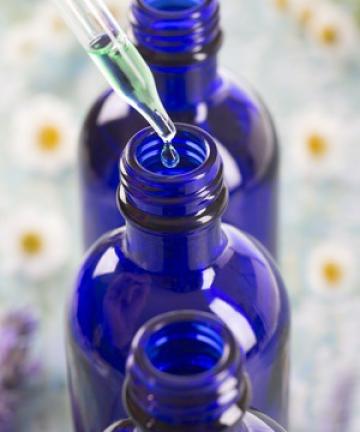
In order to fully appreciate and experience their scent, the best way to smell them is to use smelling strips (mouillettes), not directly from the bottle. Smelling strips allow a steady evaporation of the essential oil so that its true fragrance and layers evolve over time.
I like to use the strips with a pointed end as it makes it easier to dip into small bottles or vials. Unscented tissues, paper towels or paper blotters can be used as substitutes to smelling strips.
Get your samples, smelling strips, notebook and pen assembled in your quiet space. Choose a maximum of three different oils for each exercise to avoid overload or making yourself feel ill. Make sure you take a short break between smelling each essential oil.
Fold the strip at right angles from the pointed end. This allows the smelling strip to sit comfortably on your work space and the tip doesn't come into contact with anything.
Apply one to two drops or smear of your essential oil or absolute onto the pointy end of the smelling strip or dip it up to 0.5 cm into the bottle or vial. Label the square end of the strip with the name of the aromatic and time.
Breathe in and exhale away from your strip before placing it under your nose without touching the tip. Close your eyes and take a brief, light sniff whilst gently waving the scent strip under your nose. You can then take another sniff and inhale a little more deeply.
Concentrate on the scent and record your impressions immediately in your notebook. Use the same prompts as the previous exercise. This natural aromatics sensory wheel from perfumer Mandy Aftel can be helpful with understanding odour descriptor terms and gives information regarding top, middle and base note essential oils.
Making notes in an ordered and systemised fashion, with practice, helps to overcome the "verbal overshadowing effect", where our attempts to find the right word to describe a scent interferes with the perception of the actual aroma.
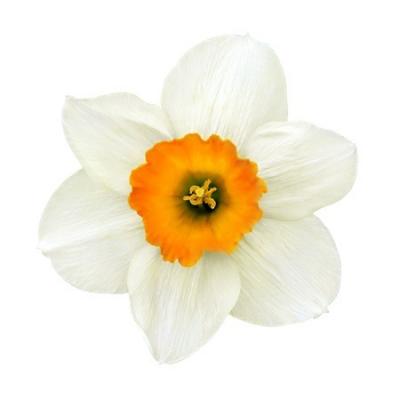
Sniff your sample at 5, 15, 30 minutes and then at the one hour interval. Smell it again after 24 hours. In the case of base note oils like sandalwood or vetiver that have low volatility, you can still notice their scent on a smelling strip for several days after.
Try to detect the differences as the essential oil evaporates, revealing its top, middle and drydown.
Top notes emerge straight away and dissipate quickly. The middle or body notes of an oil usually reveal themselves 15 to 45 minutes later. The base or drydown may not appear until between one to several hours later.
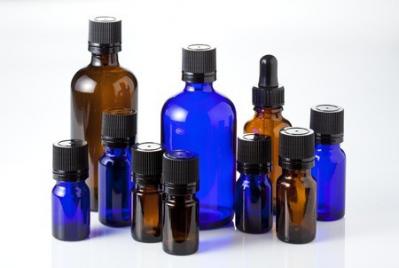
Essential oils are more concentrated and intense compared to their original plant sources so you may also like to do a comparative sensory study between the two.
Other exercises you could try include comparing single essential oils to an essential oil blend to see if you can identify the individual oils in that blend.
Consider performing a "blind" sampling where someone else prepares the strips for you and see if you can correctly identify the aroma.

Safety precautions:
- Don't allow essential oils to come into direct contact with your eyes or skin.
- Consult a reputable text for safety data on essential oils or a qualified health professional if you have any medical concerns.
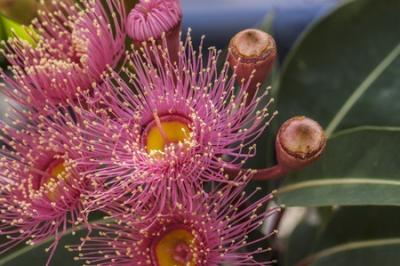
Further reading and resources
- A sensory journey by Jennifer Peace Rhind.A set of 24 cards exploring different essential oils and guided scent meditations.
- How to improve your sense of smell. Wiki How.
- How to describe a smell. Wiki How.
- Smelling strips available for purchase online via Karen Gilbert.
- Sensory and flavour aroma wheels. Pinterest - Melinda Christophersen.
- Aromatic profiles of essential oils used in Scentcillo blends.
- An exploratory investigation of coffee and lemon scents and odour identification. Pubmed. A study from 2011 showed that smelling coffee beans as a "nasal palate cleanser" between scents was no better than sniffing lemon slices or plain air to reduce olfactory adaptation. In fact, coffee beans have their own complex aromatic profile, so the best thing you can do to clear your nose between fragrances is to stop for a few minutes and give your nose a rest or sniff your (unscented ) sleeve or arm before smelling again.
- Sense of smell is strictly personal, study suggests. Science News. A new scent test or "olfactory fingerprint" can distinguish individuals based upon their perception of odours' similarities, possibly reflecting a person's genetic makeup.
- The uneducated nose. The New Yorker. Why naming scents is so difficult.
- How to sharpen your sense of smell - without using your nose. Science Mag. The impact of visual and olfactory mental imagery training on odour perception.
